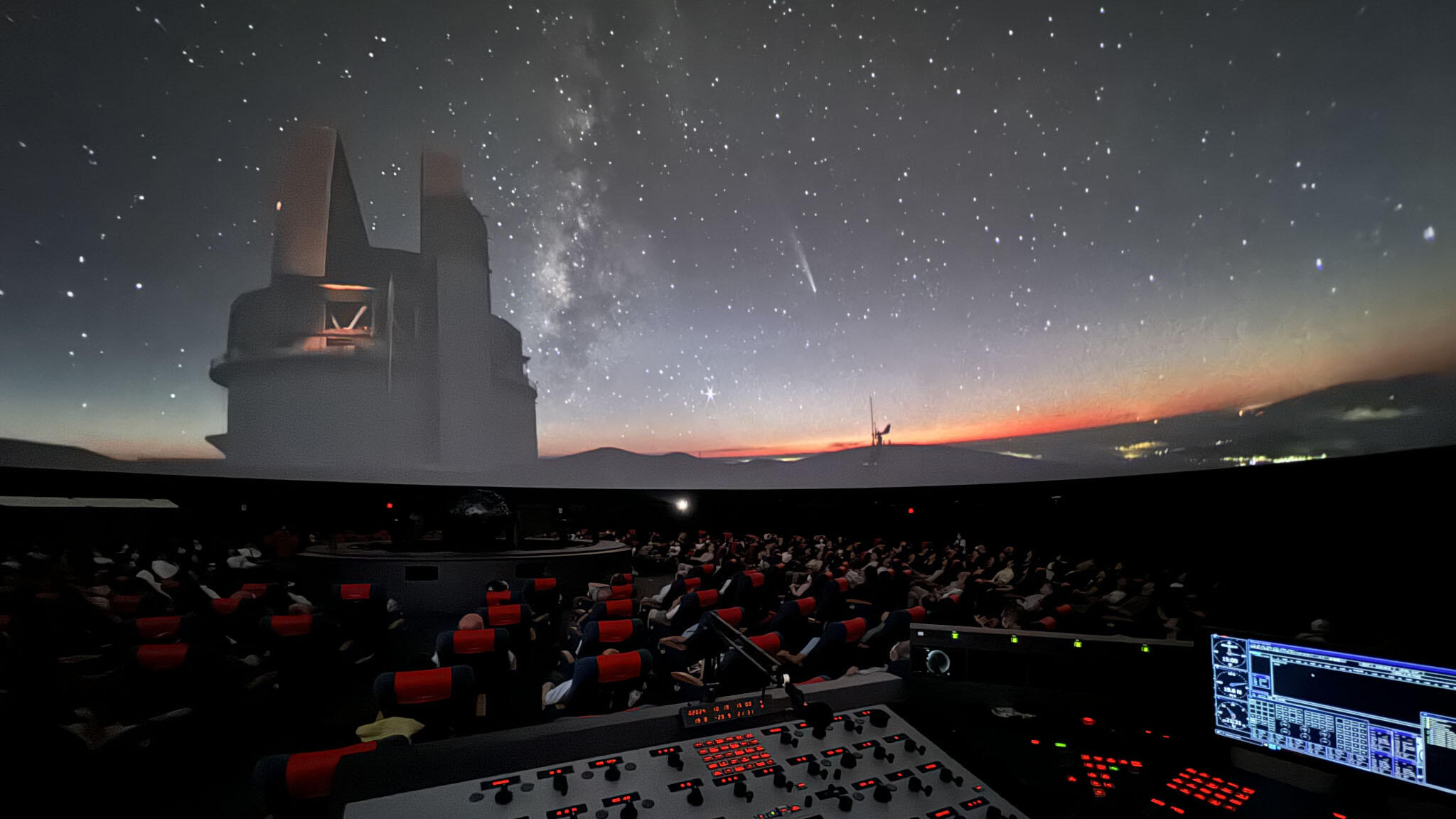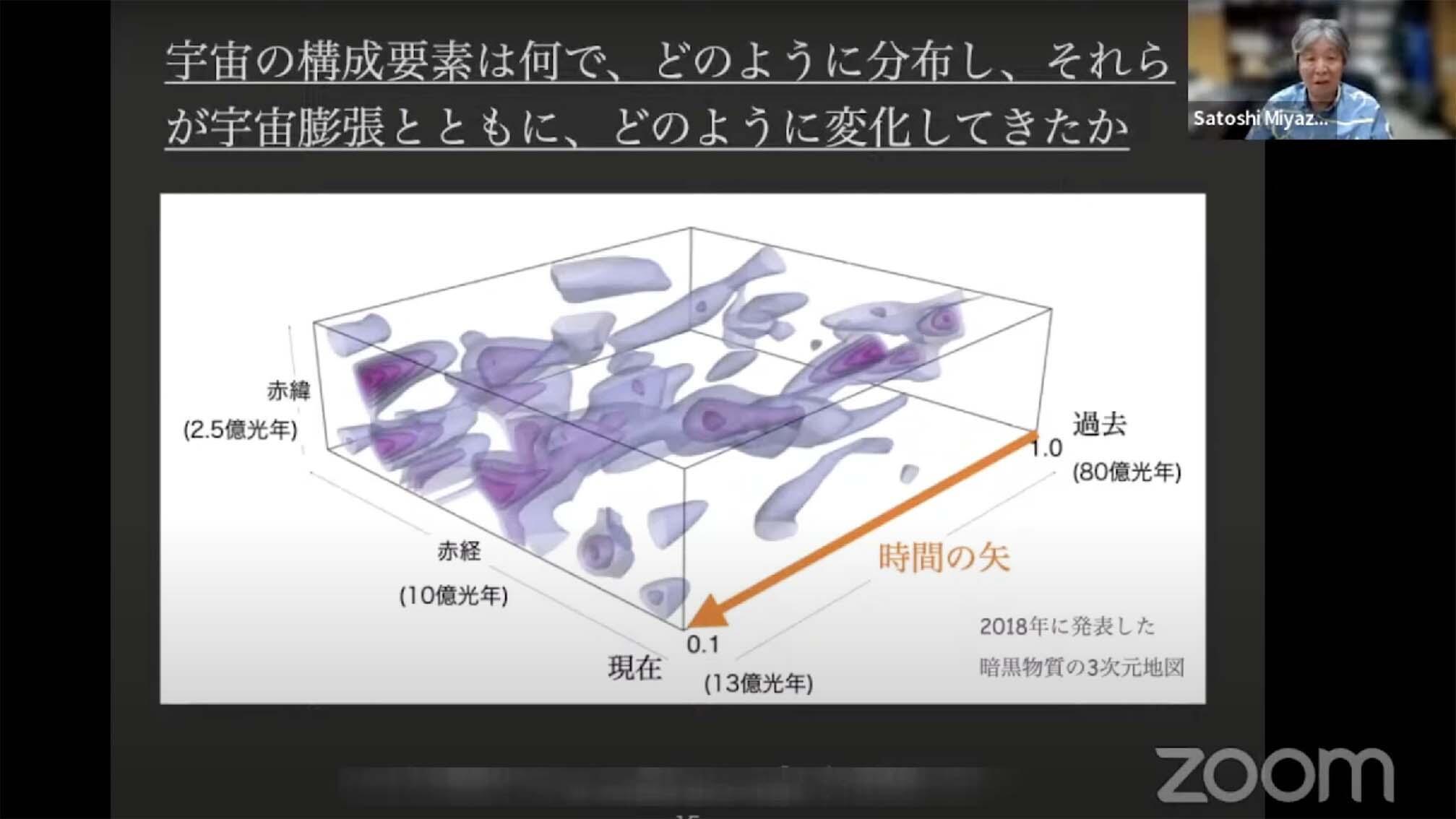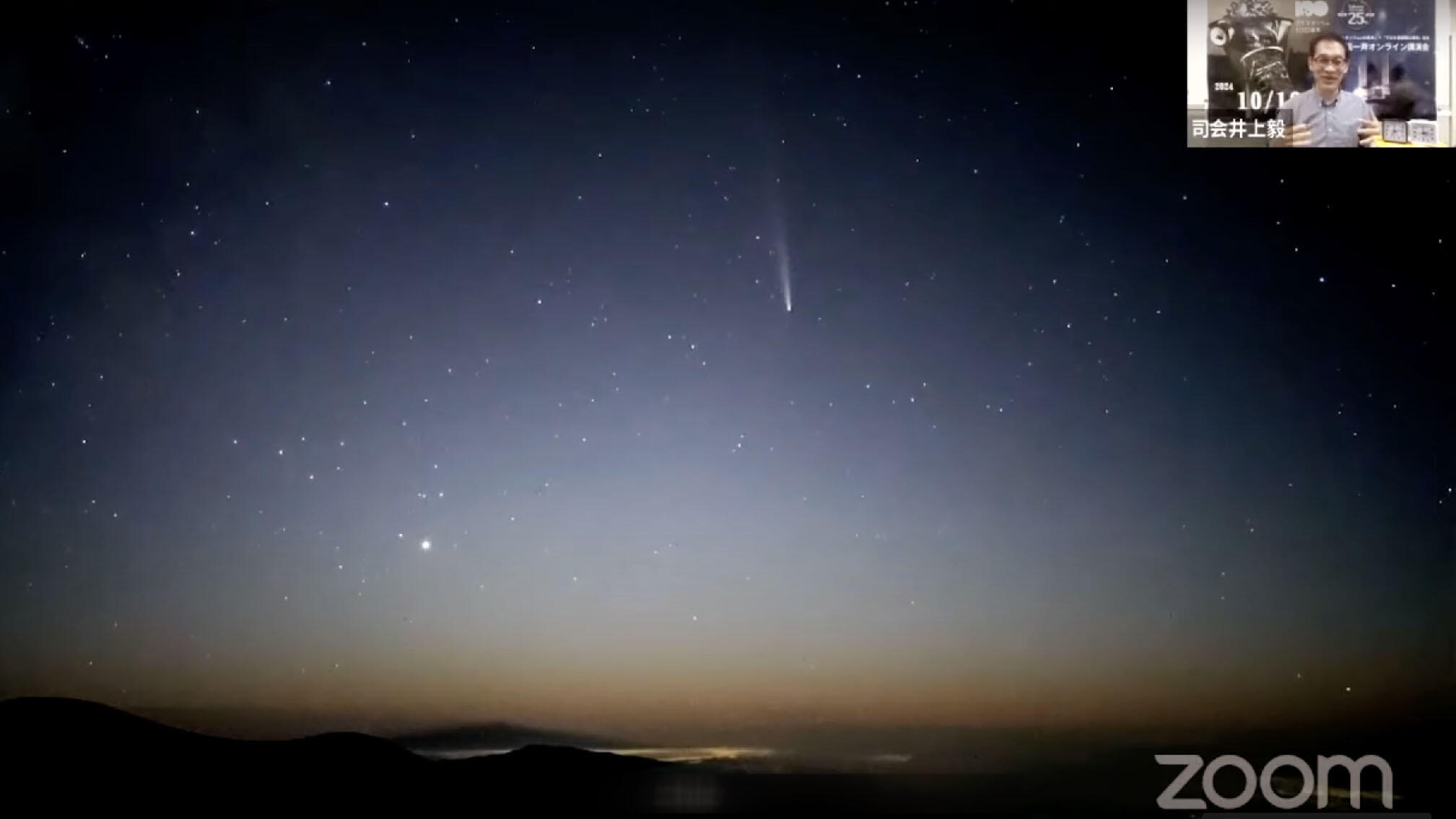Subaru Telescope’s celebration of its 25th anniversary is wrapping up in March 2025. There have been multiple projects to commemorate the 25 years since the telescope's first light, meaning the first time all of the telescope’s systems were activated at once and the first celestial light passed all the way through the telescope and was captured by an observational instrument. The year 2024 also marks the centennial of modern planetaria, celebrating 100 years since their inception (1923-1925). In Japan, these festivities are being promoted by the Japan Planetarium Association (JPA). In collaboration with JPA, we held an online event on October 19, 2024 (Japan Standard Time). This event connected the Hilo Base Facility of the Subaru Telescope on the Big Island of Hawai`i with 25 planetaria and science facilities across Japan, attracting approximately 1,900 attendees.
The event started at 2 p.m. on October 19 in Japan, or 7 p.m. on October 18 in Hawai`i. The sky above Maunakea was dark enough that the Subaru All-Sky Camera and the Subaru-Asahi StarCam, temporarily installed to face the western sky, could capture Comet Tsuchinshan-ATLAS (C/2023 A3). Participants across Japan enjoyed live views of the comet over Maunakea.

Figure 1: An almost real-time image captured by the Subaru All-Sky Camera, projected onto the full-dome screen at Nagoya City Science Museum. The Milky Way and Comet Tsuchinshan-ATLAS can be seen to the right of the Subaru Telescope. (Credit: Nagoya City Science Museum)
Satoshi Miyazaki, Director of the Subaru Telescope, delivered a commemorative talk titled "The Future of the Subaru Telescope" from the Hilo Base Facility. His presentation covered a wide range of topics, including the telescope's first light in January 1999, the new picture of the Universe revealed by the Subaru Telescope, the development of Hyper Suprime-Cam (HSC) mounted at the prime focus, and the future of the Subaru Telescope. During the Q&A session following the live stream, participants from across Japan asked insightful questions. Director Miyazaki answered each one, saying, "Good question! Today, I received many excellent questions that are challenging to answer."

Figure 2: Director Satoshi Miyazaki giving a commemorative talk on Subaru Telescope’s 25th anniversary. [Slide Title: What are the Building Blocks of the Universe? How are they Distributed? How do they Change with the Expansion of the Universe?] (Credit: NAOJ, JPA)
In addition to celebrating the Subaru Telescope’s anniversary with participants from across Japan, we simultaneously attempted to project a live image of the starry sky over Maunakea onto multiple planetarium full-domes. Before and after Miyazaki’s talk, planetarians displayed almost real-time fish-eye images from the Subaru All-Sky Camera on planetaria or flat screens. Many participants were impressed, as shown by one remark: "Many people gasped and wowed when they saw the comet on the full-dome screen" (quote from a planetarian at Discovery Park Yaizu). Additional feedback such as, "It was nice to hear a talk directly from a scientist," "I enjoyed the feeling of sharing the same moment with other planetaria," and "The all-sky images from Hawai`i were amazing" (quotes from participants at Ibaraki-City Cultural and Childcare Complex Onikuru) highlights the success of the event.

Figure 3: Comet Tsuchinshan-ATLAS over Maunakea, live-streamed during the Japan-wide online event. The moderator, Takeshi Inoue from Akashi Municipal Planetarium, is on the upper right. Following this event in October 2024, a collaborative lecture series featuring Subaru Telescope researchers was held in various planetaria and science facilities across Japan until March 2025. (Credit: NAOJ, The Asahi Shimbun, JPA)
The public archive system for the Subaru All-Sky Camera images over Maunakea is now available to the public on the Nagoya City Science Museum website. The images are automatically refreshed every minute and archived in Dropbox. They are available in a format suitable for full-dome projection, and we expect more planetaria will begin to use them. Subaru Telescope will continue collaborating with planetaria and other scientific facilities to share the latest research findings, stunning images, and videos from Maunakea with the public.
The Hilo Base Facility of the Subaru Telescope and the following 25 planetaria and science facilities connected through the Japan-wide online event.
(From north to south) Nayoro Observatory (Hokkaido), Tsukuba Expo Center (Ibaraki), Saitama City Space Theater (Saitama), GALAXCITY (Tokyo), COSMO Planetarium Shibuya (Tokyo), Minato Science Museum (Tokyo), Subaru Building at NAOJ Mitaka (Tokyo), Hiratsuka City Museum (Kanagawa), Yamanashi Prefectural Science Center (Yamanashi), Discovery Park Yaizu Astronomical Science Museum (Shizuoka), Toyama Science Museum (Toyama), Nagoya City Science Museum (Aichi), Science Hills Komatsu (Ishikawa), Mie Prefecture Children’s Center "Mie-Kodomonoshiro" (Mie), Ibaraki-City Cultural and Childcare Complex Onikuru (Osaka), Subaru Hall (Osaka), Sophia Sakai (Osaka), Osaka Science Museum (Osaka), Akashi Municipal Planetarium (Hyogo), Itami City Culture and Science Museum for Children (Hyogo), The Shimane Nature Museum of Mt. Sanbe "Sahimel" (Shimane), Kurashiki Science Center (Okayama), Kitakyushu City Science Museum (Fukuoka), Fukuoka City Science Museum (Fukuoka), and Sasebo City Science Museum for Boys and Girls (Nagasaki)
The public archive system for the Subaru All-Sky Camera images over Maunakea developed on the Nagoya City Science Museum website is supported by JSPS KAKENHI Grant Number JP24K07096 (PI: Katsuhiro Mouri).


